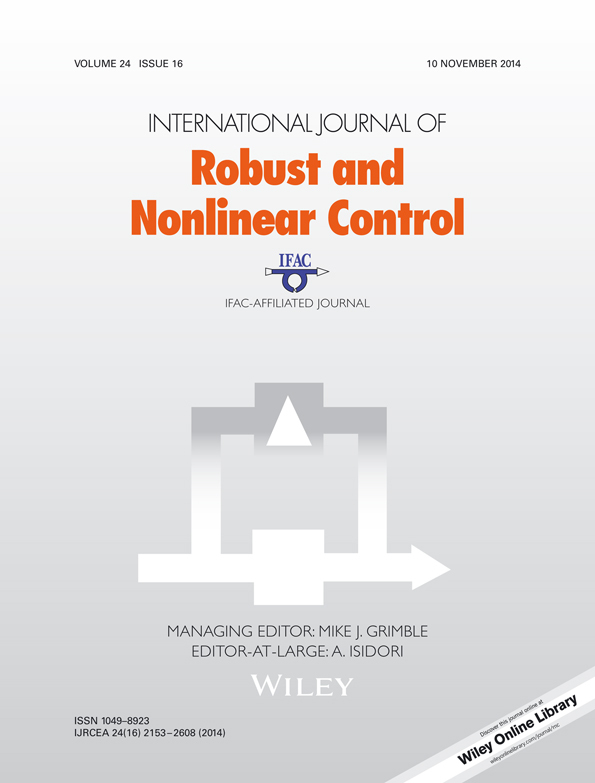Distributed consensus of multi-agent systems with general linear node dynamics and intermittent communications
Current affiliation: Department of Mathematics, Southeast University, Nanjing 210096, China.
SUMMARY
Without assuming that the mobile agents can communicate with their neighbors all the time, the consensus problem of multi-agent systems with general linear node dynamics and a fixed directed topology is investigated. To achieve consensus, a new class of distributed protocols designed based only on the intermittent relative information are presented. By using tools from matrix analysis and switching systems theory, it is theoretically shown that the consensus in multi-agent systems with a periodic intermittent communication and directed topology containing a spanning tree can be cast into the stability of a set of low-dimensional switching systems. It is proved that there exists a protocol guaranteeing consensus if each agent is stabilizable and the communication rate is larger than a threshold value. Furthermore, a multi-step intermittent consensus protocol design procedure is provided. The consensus algorithm is then extended to solve the formation control problem of linear multi-agent systems with intermittent communication constraints as well as the consensus tracking problem with switching directed topologies. Finally, some numerical simulations are provided to verify the effectiveness of the theoretical results. Copyright © 2013 John Wiley & Sons, Ltd.




